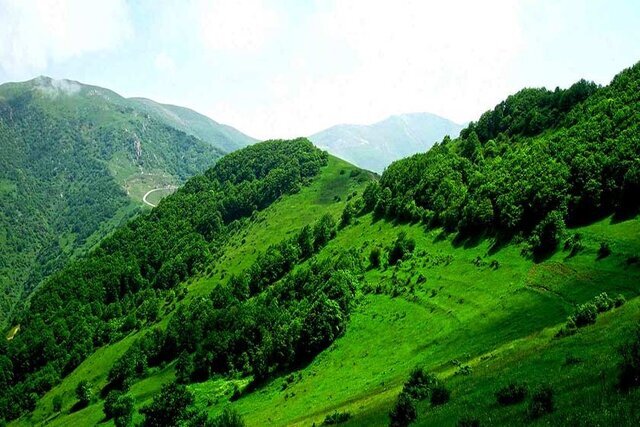Zagros forest restoration document drawn up

TEHRAN – A document on Zagros forest restoration has been prepared by a working group under the supervision of the first vice president, Naghi Shabanian, deputy of forest affairs of the Natural Resources and Watershed Management Organization, has said.
According to this document, regional and sectoral actions will also be carried out. One of these measures in line with the biological balance of the Zagros forests is the real participation of the people.
This year, the plan will be piloted in three regions of the country, including Kurdistan, he noted.
Referring to the importance of Zagros forests, he said that these forests play a significant role in the economy and livelihood of locals as well as reducing environmental problems, especially in the fight against sand and dust storms.
Zagros forests are among the most important natural resources of Iran, as it constitutes 40 percent of the country's forests. In recent years, this precious ecosystem is not in a good condition due to human interference and natural disasters, such as continuous droughts, improper use, and wildfires, while if we want to have food and biological security and sustainable development, we must pay attention to these forests.
Referring to pests and diseases as one of the main problems of the Zagros forests today, he noted that these pests and diseases are the results of activities that have disturbed the biological and ecological balance of the Zagros ecosystems.
Zagros forests are among the most important natural resources of Iran, as it constitutes 40 percent of the country's forests, and play an important role in the production of a large part of the country’s freshwater.
A campaign called “people's movement for a green Iran and each Iranian a tree” began on December 1 to evoke the people’s participation in the revival of forests for 14 years, Kamran Pour-Moqaddam, an official with the Forests, Range, and Watershed Management Organization, said.
One of the major problems in these forests is the drying up of oak trees and a fungal disease that has infected these trees. The main cause of this disease is the droughts that have occurred in recent years.
The areas that were involved in this problem have been partially controlled by watershed management and forestry operations, but seeding and rehabilitation operations are required, he said.
Zagros forest steppe ecoregion with an area of about 6 million hectares (3.5 percent of Iran) is located primarily in Iran, ranging northwest to southeast and roughly paralleling the country's western border. The forest constitutes 40 percent of the country’s forested area. The forest has also been called the western oak forest due to the dominance of oak species.
According to Science Direct Western, oak forests are home to many species including, the Persian squirrel which is the indicator species of this region. Persian squirrels and oak trees have symbiotic relationships, in which forests provide ecological requirements for Persian squirrels such as food and shelter, and, in return, the Persian squirrel contributes to seed germination and forests’ regeneration.
A wide variety of wildlife, including wolves, leopards, and even the Persian fallow deer which was once thought extinct have made their homes in the mountains.
Biodiversity in danger
Unfortunately, the protection of forests, pastures, and agricultural lands in the country has not been appropriate in recent years. Improper exploitation, land-use change, and land degradation are the main causes of deforestation and consequently, biodiversity, Eskandar Zand, the national authority for the Convention on Biological Diversity, has said.
According to the statistics, there are about 2 million hectares of forest land and 15.7 million hectares of forests in Iran.
Comparing this statistic with the data of 2005 shows that during the past 16 years, the level of forests in Iran has not changed much, but the quality of forests has been damaged so that about 1.6 million hectares of semi-dense forests in Iran (with a density of 25 to 50 percent) has been reduced and in contrast to 1.9 million hectares have been added to forest lands (with a density of 1 to 5 percent), he explained.
As a result, the quality of Iranian forests has dropped sharply, except for dense forests, which cover about 12 percent of the whole forest and are relatively inaccessible, the rest are severely damaged, he lamented.
Iran's biosphere reserves
Iran is a vast country with a wide range of biodiversity and natural resources, with 13 biosphere reserves named Golestan, Miankaleh, Arasbaran, Urmia, Arjan and Parishan, Geno, Hara, Hamoon, Dena, Tange Sayad, Sabzkooh, Turan, Kavir and Kopet Dagh has been registered in the UNESCO Man and the Biosphere (MAB) Program, he explained.
Biosphere reserves include terrestrial, marine, and coastal ecosystems. Each site promotes solutions reconciling the conservation of biodiversity with its sustainable use. There are currently 714 biosphere reserves in 129 countries, including 21 transboundary sites.
The Golestan Biosphere Reserve is located in the north of Iran and forms part of the Caucaso-Iranian highlands, situated between the sub-humid and semi-arid Caspian regions.
A wide variety of habitats and rich biodiversity can be found in the reserve, including 150 bird species, 54 species of reptiles and amphibians, 8 species of huge carnivores such as the leopard and brown bear, and more than 1,366 plant species.
Dena Biosphere Reserve is located in the Central Zagros Mountains of Iran, with a general slope of more than 60 percent. Dena is also home to a vast range of plant species and several endangered and endemic mammal species. Oak species dominate the highlands, while pistachio and almond are common at lower elevations.
FB/MG
